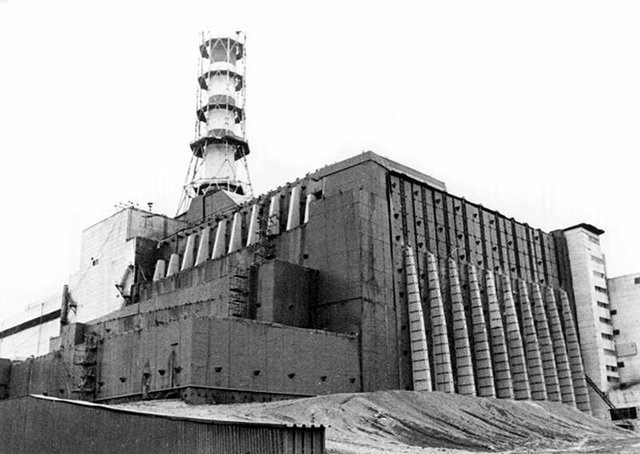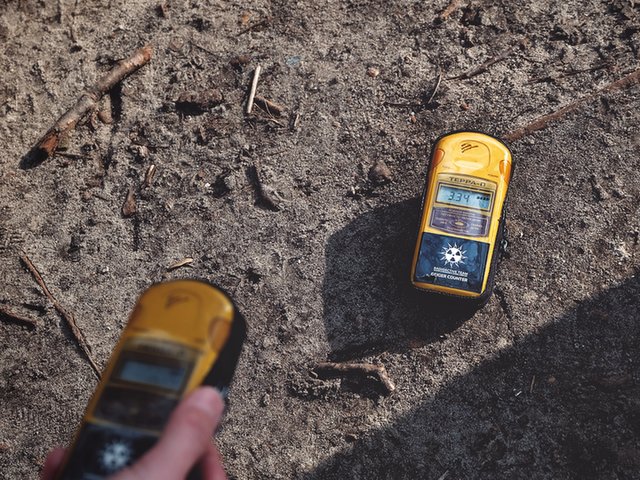Making Chernobyl safe: a timeline
Huge efforts have been ongoing to maintain and keep safe the Chernobyl area in Ukraine since the infamous nuclear disaster that took place on 26 April 1986. In this special timeline feature, Yoana Cholteevacharts the decades-long journey to build and maintain confinement facilities in the radiation-contaminated zone.
One of the biggest nuclear disasters in history took place near the city of Pripyat, in northern Ukraine, on 26 April 1986, sending a plume of radiation around the world. The explosion of Reactor No. 4 of the Chernobyl Power Complex changed the area forever.
The magnitude of this incident has heavily influenced contemporary energy generation ever since, forcing thorough tests and the imposition of heavier safety measures in nuclear power stations across the world.
Despite all the effort invested in the area to make Chernobyl safe, its clean-up still continues today as scientists from the State Radiation Ecological Reserve frequently test radiation levels to check whether people and wildlife can safely return to the area again.
Chernobyl’s No. 1, 2, and 3 reactors are currently undergoing a decades-long decommissioning, after they continued operation for several years following Reactor No. 4’s incident.
Meanwhile, Reactor No. 4, now covered by the New Safe Confinement, is estimated to remain highly radioactive for up to 20,000 years. Some also predict that the current confinement facility might have to be replaced again within 30 years, depending on conditions, as many believe the area cannot be truly cleaned, but only contained.
chernobyl
26 April 1986
‘Liquidators’ sent in where machinery failed
About 600,000 people, including firefighters, soldiers, janitors, and miners – collectively called ‘liquidators’ - were sent to the Chernobyl site straight after the explosion. It remains a historically selfless act and was necessary at the time to help tackle the exposed reactor, which burned for ten days after the explosion.
The liquidators were summoned by the Soviet Union because machinery such as remote-controlled bulldozers and robots proved unsuccessful. For this reason, the liquidators manually handled anything from hosing down streets, cutting down trees, and clearing debris to burying contaminated waste from the reactor deep underground.
To do so, the liquidators had to expose themselves to approximately 120 millisieverts of radiation, about 1,200 times the amount of an x-ray today.
20 May 1986
Construction begins on concrete sarcophagus
Less than a month after the incident, a concrete sarcophagus was designed to be placed above the open reactor to restrict radioactive contamination from further spreading in the area and to protect the reactor from climate exposure.
The construction of the sarcophagus lasted for 206 days, from June to late November of the same year. Coal miners were appointed to dig up a 168m-long tunnel below the reactor, prior to placement of the confinement.
Once installed, the sarcophagus locked in 200 tons of radioactive corium, 30 tons of highly contaminated dust, and 16 tons of uranium and plutonium. However, despite the work being performed by robots, the high radioactivity made it impossible for the seams of the sarcophagus to be completely sealed.
While this construction did a good job at the time, its structure quickly deteriorated from high radiation and by 1996 the sarcophagus was too damaged to repair.

Image: Chernobyl gallery
1992
Sliding arch selected as new covering
In 1992, the Ukraine Government organised a worldwide competition for the design of a new construction to replace the existing sarcophagus. Out of 394 competitors, 19 entries were further examined, but there was no winner. A French submission came 2nd and proposals from the UK and Germany won a joint 3rd place.
Following this, the TACIS programme, a pan-European study, re-examined the proposals and selected the British sliding arch as the best solution.
In 2017, the design and construction contracts were given to Novarka consortium, led by the French construction companies Bouygues and Vinci.
The consortium worked with local and foreign sub-contractors: the arch was made with elements designed and built by Italian company Cimolai, the cranes were manufactured in the US by PaR, the arch cladding contractor was Turkish company Okayanus, and the lifting and sliding operations were conducted by Dutch company Mammoet.
September 2010
New Safe Confinement work begins
Work on a new protective system, now called the New Safe Confinement, started in 2010 to prevent contamination escaping the damaged sarcophagus and allow the remains of the reactor to be dismantled safely.
The New Safe Confinement was designed and built with funding of $2.1bn, donated by more than 40 governments, and managed by the European Bank for Reconstruction and Development.
The construction was moved into position in November 2016, before its installation was finally completed in July 2019. As it was placed within the 1,000-square-mile Chernobyl Exclusion Zone, the confinement became the world’s largest land-based moving structure ever installed.
Easily visible from kilometres away, the New Safe Confinement arch weighs 30,000 tonnes and is expected to prevent radiation release for the next 100 years. According to DBRD, the construction has a sophisticated ventilation system to eliminate the risk of corrosion, and it is strong enough to withstand a tornado.

The New Safe Confinement system, designed to replace the concrete sarcophagus. Image: NSC
8 October 2018
Solar plant brings life back to Chernobyl
As part of an increasing renewable investment in Ukraine, the country unveiled the construction of a new solar plant, located near the nuclear power station in Chernobyl, which hosts 3,800 solar panels.
The 1MW solar plant cost approximately $1.2m and it is a collaboration between Ukrainian company Rodina and Germany's Enerparc AG.
The installation of this solar plant marked the first time the area has produced power since 2000, when reactors No. 1, 2, and 3 of the nuclear plant were finally closed.
Solar Chernobyl chief executive Evhen Variagin has said in a World Economic Forum article that the new solar construction is “not just another solar power plant”, but the project carries a symbolism for the area which will probably never produce nuclear energy again.
14 April 2020
Forest fires threaten the area
Earlier this year, one of a sequence of forest fires was detected within 1.2 miles of a radioactive waste depot, located within Chernobyl’s Exclusion Zone and populated by 200 people.
Hundreds of firefighters, supported by aircraft, battled the fires for approximately ten days. Despite patches of grass smouldering for a couple of days, the blazes were eventually contained near the decommissioned plant and Ukrainian emergency officials were able to announce that any incidents had been prevented.
In the meantime, emergency services kept measuring radiation levels and confirmed that radiation rates at Kyiv, the country’s capital located about 60 miles south of the plant, remained within norms.
It was concluded that fires were most probably caused by residents burning waste, as the fires quickly turned into blazes.

Image: Oleksandra-Bardash